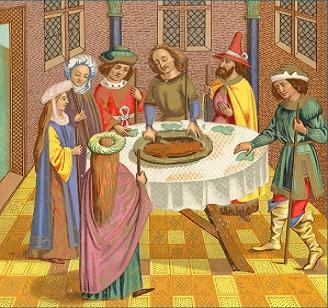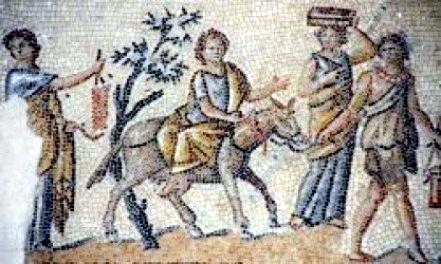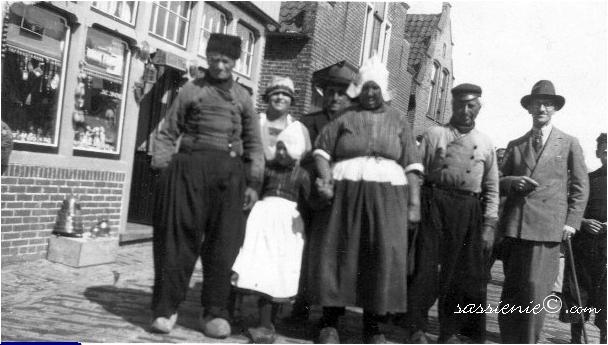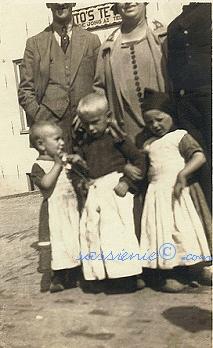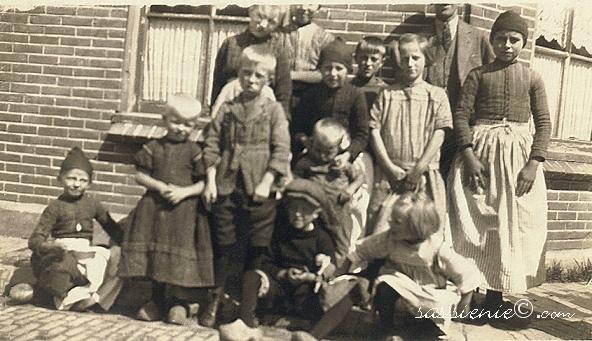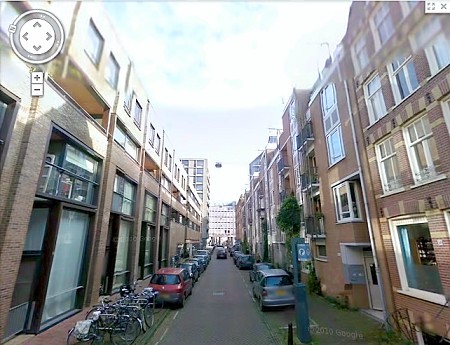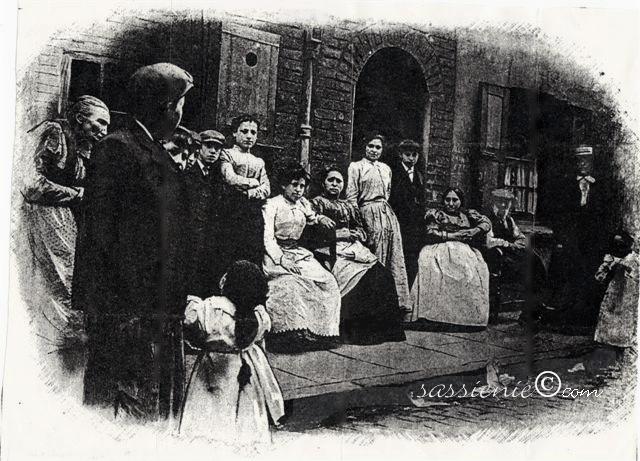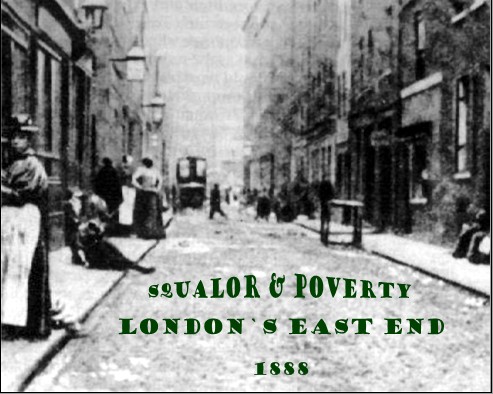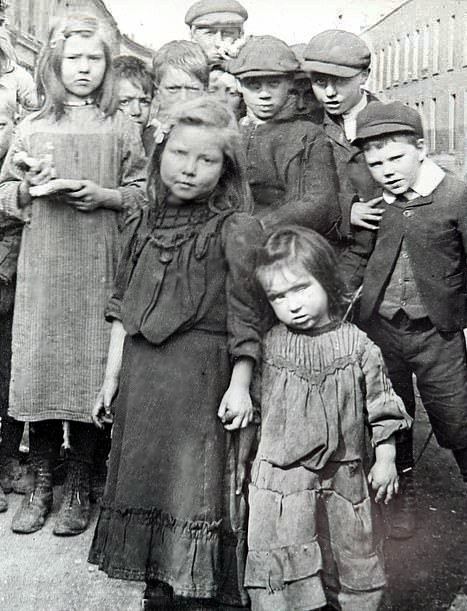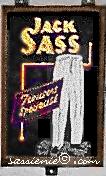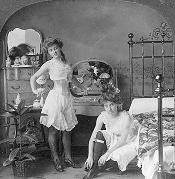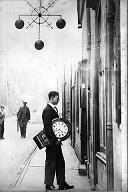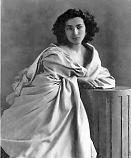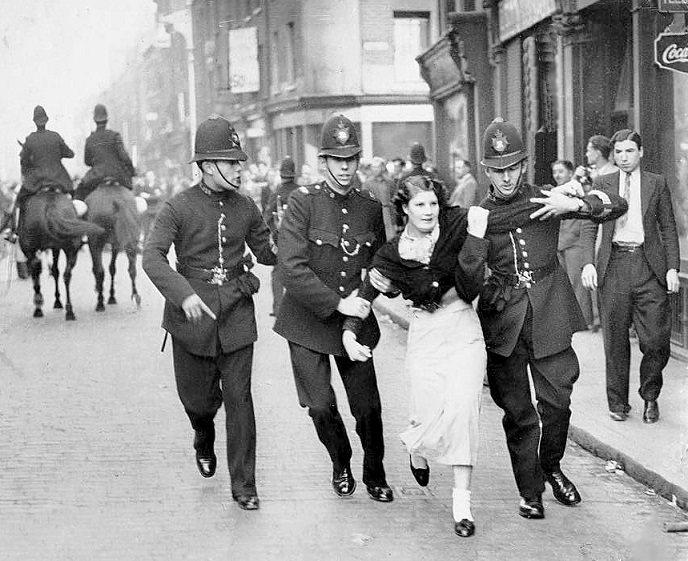|
The Complete Family History Pages 1 2 page 1 of 2
This is an account of the Sasieni family history, from their origins in Lemberg, Galicia, Poland and Venice in Italy, immigration to Amsterdam in Holland, further on to the East End of London, England and the first family pioneers and settlers to the United States. In particular, the Whitechapel and Spitalfields areas of London from mid nineteenth century to the later part of the twentieth century. The following was gleamed from relatives now passed away, from documents of the public records offices, Amsterdam Holland, London England and New York USA.
|
|
Family Ancestors Origins and History
Family ancestors were mostly Ashkenazi Jews and their origins have been traced to the 1600s Fresco families in Venice - Italy and the de Wolf families from Lemberg, which during the period was the capital of Galicia in Poland. History suggests that it is possible the de Wolf ancestors had fled into the Saxony regions of Germany from Russia between 1223AD and 1240AD during the thirteenth century Mongol invasions of the Russian Principalities, and later due to political and religious strives in Germany at various periods during the middle ages they began residing in Lemberg sometime before the seventeenth century. The name of the city of Lemberg varied among it`s different communities and had also changed under the rule of various successive governments: (German/Yiddish – Lemberg), (Polish – Lwow), (Russian – Lvov) and (Ukrainian – Lviv). Lemberg is today known as Lviv in Western Ukraine. It was part of Austria (1772-1919), Poland (1387-1772, 1920-1939), Germany (1941-1944), USSR (1945-1991) and since 1991, after the dissolution of the Soviet Union; the city has become part of an independent Ukraine. Galicia was the poorest region in all of Central Europe and the majority of Galician Jews had little wealth, mostly working as manual labourers in workshops or small enterprises. Lemberg (Lwow) was the capital of Galicia, that during the middle ages was a part of Poland Click on portrait for full history The Italian Connection
The mutual ancestor of all Sasieni descendants was Akiba de Wolf 1663 – 1717. He married Bele Friske daughter of Tamar Fresco and father unknown. The parents of Tamar Fresco were born in Venice – Italy and besides that nothing is known of their origins. It is possible that the Venetian ancestors originated either from the days of the Roman Empire, Spain or the Byzantine Empire, that has yet to be established. Red hair Red hair is a common trait amongst all four branches of many Sasieni family individuals. In European culture prior to the 20th century red hair was often seen as a stereotypically Jewish characteristic. During the Spanish Inquisition, all those with red hair were identified as Jewish. In Italy, red hair was associated with Italian Jews, and Judas was traditionally depicted as red-haired in Italian and Spanish art. The common red haired features prevalent in all branches of the Sasieni family, past and present, is likely to have been inherited from the Italian ancestors, possibly because of an influx of Celtic DNA over a period of several centuries.
The Move to Holland
During the mid seventeenth century the Venetian and Galician family ancestors had immigrated to Amsterdam in Holland, for reasons of escaping political instability, suppression and abject poverty, although once in Holland their poor living conditions hardly improved. They were known by the assumed surname of de Wolf, with close associations to the Fresco families, soon becoming well assimilated into Dutch society.
Jewish quarter Amsterdam, Holland – early nineteenth century
During the early nineteenth century the Benevolent Society of Holland established three live and work settler farming colonies for the poor and unemployed. The largest colony was Frederiksoord situated in Vriesland, northeast of the Zuy der Zee; the other two were Willemsoord and Wilhelminasoord. Whole groups of families who were closely related to all Sasieni/Sassienie family members, including grandparents, parents and children became part of the Willemsoord farm labourers’ colony, many remaining on the farm for a period of 12 years. Although being housed and having employment, living conditions on the farms were still harsh. Many babies were born and died on the Willemsoord farm.
Those of the farm colonies after leaving or were involved in other types of work during those times could only find employment as unskilled labourers, either within the tobacco industries, as manual workers or the most general of their occupations, were in service as domestic servants or porterage, which was a trend that continued to the eventual emigration of Wolf Jacob Sasieni and his family to England in the mid nineteenth century.
During World War two the Jewish inhabitants of Lemberg suffered and were subjected to the most extremes of blood terror and brutalities by the Nazi regime, both from the German occupiers and their own Ukrainian neighbours and countrymen. Some were sent to extermination camps in the east, but most were either burnt to death in their synagogues, shot or beaten to death by mobs in their homes or on the city streets. The majority of Jews in the city of Lemberg did not survive the war and it is doubtful that there are any Sasieni/Sassienie relatives living in that region today.
Substantiated evidence and accurate data in respect to the origins of Sasieni family ancestors is extremely limited as to what references are available on public and official records. Research and studies regarding historical events of the Jewish communities within the Saxony and Galician regions of Europe during the middle ages, suggests that these events during the early periods of the Sasieni family history, although could be regarded at a theorist level, are indeed fact. Researched and documented by Anthony Steel © Up dated: 23.02.2015
Sassienie Family Tree
Family Surname
The majority of European Jewish families did not use surnames until it became obligatory during periods according to the countries in which they lived, but most commonly at the beginning of the nineteenth century. In some European countries Jews were imposed to acquire family names as a preceding requirement for establishing citizenship status under the laws.
When acquiring family surnames became mandatory, those who already had existing assumed ancestral family names usually continued the same naming traditions (sometimes with variations) from generations to generations. This official using of surnames was especially prevalent within the Sephardic communities, however, as an indication of disapproval some families would assume any types of surnames, sometimes pertaining to an animal, an occupation or the name of a town merely as a formality rather than having intentions of continuing the surname throughout the family lineage.
Prior to the family ancestors immigration to Holland, their children assumed many different surnames and the direct ancestors of all Sasieni/Sassienie family members adopted the surname of de Wolf, literal meaning, a wolf or the wolf, which became a common surname in Germany and in central Europe, although they still mainly only used their first given names and the first names of their fathers as middle or last names.
The formal using of surnames became mandatory in Holland under Napoleonic Law after 1811. Wolf Jacob, born 1796, son of Jacob Salomon de Wolf, later took advantage of this law to establish himself and family a preferred surname, other siblings assumed different surnames. Wolf Jacob become officially known as, Wolf Jacob Sasieni or Wolf de Jacob Sasieni. Wolf – his father’s last name, Jacob – his father’s first name and the surname Sasieni – probable meaning in Dutch, Polish, and Jewish (eastern Ashkenazic): ethnic and regional name from Middle Dutch Sasse, Polish Sas meaning Saxon or Saxony. The surname of Sasieni is probably a deviation meaning, coming from the regions of Saxony – Sasieni – Saxony, from whence they originated.
Over the last 150 years there appeared several variants
of the surname of Sasieni.
The names Lassienie, Sasine, Sasiene, Sasienie, sass, Sassiene, Sassieni,
Sassienie are on record. Many of these variants are often found
even within immediate family groups. An example of this is a Morris (Moses) Sassienie, born in England 1862. Morris was the father of twelve children. Their
names are recorded as: Betsy Sasiene, Hannah (Annie) Sasiene, Meyer Sasiene,
Dinah Sassiene, Jacob (Jack) Sassienie, Martha Sassienie, Myer Sassienie,
Florence Sassiene, Nathaniel (Nat) Norman Sassieni, Rachel Sassienie, Abram
(Alfred) Sasiene and Solomon (Sidney) Sassiene. Researched and documented by Anthony Steel © 05.05.2013
Sassienie Family Tree |
Differences between Ashkenazi
The original Sasieni families were 100% Ashkenazi originally from Lemberg, Galicia in Poland. The Venetian ancestors may have been Sephardic Jews but they married Ashkenazi and only worshiped at Ashkenazi synagogues. In fact the Dutch had acquired their own unique traditions that differed greatly from the customs of the East European Ashkenazi Jews and later became much more anglicised. One major difference is that the original Dutch Immigrants to London never spoke Yiddish, unlike their East European counterparts at the time.
Ashkenazi are the
descendants of Jews from central and Eastern Europe.
Sephardim are the descendants of Jews from Spain,
Portugal, North Africa and the Middle East, "Ashkenazi"
being derived from the Hebrew word for Germany and
"Sephardic" is derived from the Hebrew word for Spain. The Sephardim fundamentally follow the beliefs of Orthodox Judaism with variations from the Jewish religious practices of the Ashkenazi. For example, during some Jewish festivals and holidays, the Sephardim maybe allowed to eat certain foods where as the Ashkenazi may forbid the eating of these foods. But not all Jews are strictly observant of the rituals of Judaism. The levels of Jewish religious following varies greatly, from non-practicing to liberal and at the other end of the spectrum, the ultra orthodox. Throughout Jewish history, relationships between Ashkenazi and Sephardim have always been delicate. It is known that some Sephardic communities have attempted to be regarded as separate entities claiming origins from the Mediterranean (Spain and Portugal), and who preferred to be regarded as a people distinct from the Ashkenazi Jews of Central and Eastern Europe.
Correlations between the two groups in the twentieth century came under even more pressure by an initiative of some prominent European Sephardic Jews during the German Nazi occupations. They tried with unestablished scientific racial theories to prove that their group is not hereditary Jewish, but are of a Mediterranean race and thus should not be subject to deportations. The attempted bailout proved futile, although many had powerful friends and strong family connections within certain South American countries and managed to either buy they’re way in or escape the Nazi regime to become long term residents or citizens in the South Americas, an option that was not open to Ashkenazi Jews mainly for reasons that they had neither the funds required or any connections there.
Historically and up to present day the Sephardic-Ashkenazi divide has become and continues as an institutionalized dilemma between the two Jewish communities, mainly due to cultural differences and variations in religious practices.
The present day diversity of the Sassienie family
During the past most of our Sasiieni/Sassienie ancestors though not strictly orthodox and many being completely anglicised, favoured to stay within the Jewish faith. They considered themselves as Dutch, Americans or English first and as Jews second. They abided by the rules of liberal Judaism, married within the faith and usually preferred to live among the Jewish communities in the areas where they resided. Although some did marry out, these events were rare and often the family would try to dissuade their children from doing so, sometimes having to endure the wrath of the family’s great displeasure for those who were considering or did marry out of the religion.
Over the last 40 years major sociological changes have taken place within the family units, due to multi cultural influences of their birth countries, the disperses of extended family members and local area communities and the relaxing of strict religious practices. As a result a large number of family members married out from the Jewish faith with the majority of their children taking on the faith of the non-Jewish parent. Today, at least 35% of worldwide Sassienie family members are no longer a part of the Jewish faith. Now included in the Sassienie family tree pertaining to all four branches, are Protestant, Catholic and even Buddhist religions.
Sassienie Family Tree |
From Amsterdam,
Holland to
The Dutch Family Sasieni
Jews first began to appear in the Netherlands during the fifth century A.D. They were prohibited from partaking in various professions and in the twelfth century many began to eke out a living as moneylenders that was one of the very few occupations open to them when the profession became illegal for Christians.
Many Jews fleeing the Spanish and Portuguese Inquisitions of the 1490’s and from other European countries during the middle ages settled in the Netherlands and later during the seventeenth century, Amsterdam was established as the centre of the Jewish Diaspora, a period when small numbers of Ashkenazim (Jews from Germany and Eastern Europe) seeking economic opportunities began to immigrate to the Republic of the United Netherlands, the majority being employed by the more prosperous Sephardic Jewish community.
Within the first half of the eighteenth century there was a great influx of poor Ashkenazim Jews, mostly from Eastern Europe into Amsterdam and the Dutch Rural areas, which created an economic and cultural divide between the prominent and established Jews that had settled in the Netherlands for decades and even centuries before. This was to become a precedent in history that would repeat it`s self a hundred years later in the east end of London, England.
Records and cultural differences confirm that the Sasieni family although were people of little wealth, were not part of the Eastern European Ashkenazim influx to Holland during the eighteenth century and had been in the Netherlands at least since the mid 1600s. During the late eighteenth century it is on record that they resided at Kerkstraat in Amsterdam, Holland, also known as the Joden (Jews) Kerkstraat and today is known as the Nieuwe Kerkstraat. English translation: New Church Street.
From the early nineteenth century it is known that Wolf Jacob Sasieni and later his wife, Dientje (Dinah) Koekoek, with four of their surviving children resided at: Kerkstraat 27, Amsterdam, Holland. As the family expanded to include the spouses of their children, they lived both at Kerkstraat 27 and Kerkstraat 25 up to their emigration to England, the last of them leaving Holland on January 3, 1855. It appears that the four sons of Jacob immigrated to England from April 30, 1852 up to 1854 and followed by parents, Jacob and Dientje on January 3, 1855, thus being the finalisation of the Sasieni family in Holland.
It is on record that most, if not all the descendents of our de Wolf collateral ancestors had either died in childhood or perished during the Holocaust, therefore it is probable that the Sasieni branch of our family tree are one of the very few surviving family branches of this group today.
Photo: taken with local Dutch residents in Amsterdam, Holland - 1920s From left front: second person Julia Sasiene, fifth person, Julia's husband - Lewis Barnett. Written on reverse of this photo is: No 60 Kleina KerkStraat
Photos 1 & 2: Lewis Barnett with Julia Sasiene and some local KerkStraat children - 1920s
Nieuwe Kerkstraat (New Church Street) taken from Google street view - 2008
It is with thanks and high gratitude to the granddaughters of Lewis Barnett and Julia Sasienie for their kind contributions of these classic photographs plus other vital records that has made the tracking of the Sasieni family back to the Kerkstraat, Amsterdam in Holland possible and for sharing this with the Sassienie Worldwide Family tree and Website
The arrival of Wolf Jacob Sasieni and his children in
London
Photo: early twentieth century - Tenterground, Spitalfields, East End of London, the original England homes of the Sasieni Dutch Immigrants.
Individuals in photograph are thought to be: From left back: elderly lady - Rebecca Zwart, lady folded arms – Julia Sasiene, lady in white sitting - Dinah Sasiene, lady next to her sitting - Sophia Sasiene, next lady sitting with dark blouse - Sarah Sasiene. Other persons in photograph unknown, but are probably also Sasiene family members.
A history and facts about what it was like to live in the East End of London during those times
This candid image was one of a set taken by an unknown photographer with the initials 'KY' at the turn of the 20th century and shows young children from the Jewish streets of Spitalfields bundle together to have their photo taken London was experiencing both growth and decay and migrants communities lived cheek-by-jowl in the shared destitution of the East End.
Video - 19th Century Whitechapel. A Brief Look At The Squalor
It was a time when Britain prospered, thanks to the Empire, which brought immense wealth to factory owners and traders. But only a stone’s throw from the East London docks, via which this trade and riches passed, children were dying of starvation and disease. On these streets and alleys hordes of urchins eked out a hand-to-mouth existence fending for themselves while their parents worked 14-hour days in the factories and docks. Infant mortality was higher in 1900 than in 1800, as increasing numbers of families sought work in the cities. In the East End, a staggering 20 per cent of children died before their first birthday. Many of the poorest families lived ten to a room with no clean running water for washing and drinking. The carcasses of dead animals littered the streets. Excrement and rubbish often blocked the drains. Diseases such as diphtheria, cholera, measles and syphilis were prevalent. A third of households were without a male breadwinner and women were forced to go out to work, some even resorting to prostitution as a means of acquiring an income, leaving children as young as six to care for themselves and look after their younger siblings. The whole area was an underclass of poverty stricken families, vagrants, drunks, criminals and prostitutes. 100 years ago and more, this is something the Sassienie family had to contend with but were never a part of, only circumstances placed them into the same environment.
Sassienie Family Tree
Lifestyles and history of our original Dutch Immigrant ancestors to England
During the middle nineteenth Century up to the early part of the twentieth century, due to persecution or poor economic situations in their own countries, thousands of Jews immigrated to England and moved into Spitalfields and nearby surrounding areas of the East End of London.
A small minority later managed to move on to the United States, mostly New York and New Jersey where some already had associates or family connections there.
America during that period was also having it`s own problems. It is difficult to equate the London of Jack the Ripper with the age of the American Wild West, yet only seven years before the Whitechapel murders, in July 1881, Billy the Kid had been shot dead. In October of the same year Wyatt Earp and Doc Holliday fought it out with the Clantons in the gunfight at the OK Corral, and in April 1882 Bob Ford shot dead Jesse James. Sophia Sasiene daughter of (Solomon Wolf Sasiene 1839-1901 born Amsterdam Holland) married Morris (Sol) Levy in London at The Great Synagogue in 1889 and moved to the USA with her husband later that year. Sophia died from complications during an operation in New Jersey on December 1904 age 36.
The Immigrants who remained in the area lived in cheap rented poor quality apartments that were known as the tenter grounds. This was a street in Spitalfields, East London. The name dates back to the seventeenth century when this plot of land was surrounded by weavers' houses and workshops and used to wash and stretch their fabrics on 'tenters' to dry. The ground was established by the French Protestant Huguenot weavers, who had fled to Spitalfields from Catholic persecutors in France during the seventeenth century. By the nineteenth century the weavers had left and the ground was developed for housing.
The large once stylish Huguenot homes were divided into separate lots by the landlords in order to cram in as many tenants as possible, some only comprising of one room apartments often accommodating families of up to 9 persons sharing a room. Wolf Jacob Sasieni and his family including other recent Jewish Immigrants in the area lived in appalling conditions, which were overcrowded to the extremes, with only basic lack of water and sanitation facilities. It proved hardly much of an improvement from the impoverished conditions they had fled in their birth countries. Occupations and trade Most of the Dutch Jewish Immigrants would come to work as manual labourers, factory workers, tobacco trade workers and in the sweatshops of the textile industry for the producing of cheap garments sold at markets. This became fondly known in the Yiddish term as the schmatta (smutta) trade, meaning rag trade describing the industry for the making of cheap low quality clothing. During the early part of the twentieth century, Jacob (Jack) Sassienie became a trouser maker and established his own workshop at the basement of his home in the Mile End Road, Stepney, London. He became a trouser supplier to the tailoring industry, including the world famous Savile Row of bespoke tailors, which is a street in Mayfair, central London known principally for its traditional men’s bespoke tailoring for the rich and famous.
This plaque was displayed outside of 122 Mile End Road, the home of Jacob Jack Sassienie for many years. It was made of slate with a solid oak wood frame. The sign says; Jack Sass Trouser Specialist and was hand painted by the Canadian commercial artist, Percy White.
Areas of residence By the Victorian era, the silk industry had entered a long decline and the old merchant dwellings had degenerated into multi-occupied slums. Spitalfields became a by-word for urban deprivation and by 1832 concern of a major London cholera epidemic led The Poor Man's Guardian (18 February 1832) to write of Spitalfields: “The low houses are all huddled together in close and dark lanes and alleys, presenting at first sight an appearance of non-habitation, so dilapidated are the doors and windows:- in every room of the houses, whole families, parents, children and aged grandparents swarm together.” In 1860 a treaty was established with France allowing the import of cheaper French silks. This left the many weavers of Spitalfields, neighbouring Bethnal Green and Shoreditch indigent. New trades such as furniture and boot making came to the area and the large windowed Huguenot houses were found suitable for tailoring, attracting a new population of Jewish refugees drawn to live and work in the textile industry. By the later 19th century inner Spitalfields had eclipsed rival claimants to the dubious distinction of being the worst criminal rookery of London with common lodging-houses in the Flower and Dean Street area being a focus for the activities of robbers and prostitutes. The latter street was dubbed in 1881 as being "perhaps the foulest and most dangerous street in the metropolis". Another claimant to the distinction of being "the worst street in London" was nearby Dorset Street, which was highlighted by the brutal killing and mutilation of a young woman named Mary Kelly in her lodgings perpetrated by the serial killer who became famously known as Jack the Ripper in the autumn of 1888. These events must have been a frightening experience for the Sassienie family, and for the whole community of Whitechapel. This was the climax of a whole series of slayings of local prostitutes that became known as the Whitechapel Murders. The sanguinary activities of "Jack" was one of the factors which prompted the demolition of some of the worst streets in the area 1891-94. Deprivation, however, continued and was brought to notice by social commentators such as Jack London in his The People of the Abyss (1903). He highlighted 'Itchy Park', next to Christ Church, Spitalfields, as a notorious rendezvous for homeless vagrants. Whitechapel's heart is Whitechapel High Street, extending further east as Whitechapel Road, named after a small chapel of ease, dedicated to St Mary.During the Victorian era the local East End of London population of poor English country residences was substantially increased by foreign immigrants, particularly Irish and Jews from eastern and central Europe. Writing of the period 1883–1884, Yiddish theatre actor Jacob Adler wrote, "The further we penetrated into this Whitechapel, the more our hearts sank. Was this London? Never in Russia, never later in the worst slums of New York were we to see such poverty as in the London of the 1880s." This endemic of poverty drove many women to prostitution. In October 1888 the Metropolitan Police estimated that there were officially 1,200 prostitutes of very low class resident in Whitechapel and about 62 brothels. Reference is specifically made to them in Charles Booth`s Life and Labour of the People of London, specially to dwellings called Blackwall Buildings belonging to Blackwall Railway. Such prostitutes were numbered amongst the eleven Whitechapel Murders (1888–91), some of which were perpetrated by the legendary serial killer known as 'Jack the Ripper’. These attacks caused widespread terror in the district and throughout the country that drew the attention of social reformers to the squalor and vice of the area, even though these crimes remain unsolved today. Prostitution
Prostitution became a major industry in the East End of London for the servicing of ships crews with the expansion of the London docks during the seventeenth century. Ships crews were 'paid off' at the end of a long voyage and would spend their earnings on drink and the local prostitutes. By the nineteenth century attitudes and toleration towards these women of ill repute were changing. As the social reformer William Acton described; “the prostitutes are a 'horde of tigresses who have infested the dens of depravity of the East End of London” It was estimated that between the Houndsditch, Whitechapel and Ratcliffe areas there were as many as 1803 prostitutes, some becoming street workers from as young as 13 years old. Between Mile End, Shadwell and Blackwall 963 women were involved in the trade. They were often victims of circumstance; there being no welfare state and a high mortality rate amongst the inhabitants that left wives, daughters and families destitute with no other means of income. The prostitutes were often targeted by various Jewish organisations, Christian reformers, missionaries and other do-gooders in an attempt to reform them, but usually to no avail and had little or no affect on the curbing of these women from the underclass’s of London society plying their trade. Prostitution became rife in the East End of London that invoked Parliament to introduce several new laws and acts in order to limit prostitution in the area and help decrease the spread of sexually transmitted diseases, many that were fatal. But still prostitution somehow managed to flourish in Victorian London.Music halls and theatres
Simon Bernstein, the father in law of Nathaniel (Nat) Norman Sassieni - born 1849 Krasnopoltz, Poland – died 1933 London, England, achieved the complete re-fitting of a large shop in the Mile End Road, London, England as the first cinema in the East End (The Penny Flicks). Over the years audiences dwindled as the Jewish communities became more prosperous and gradually began leaving the area. Most of the actors moved their performances to more affluent parts of London and many of the East End old style music halls and theatres began to close, later being replaced by cinemas and pub entertainments, including some less respectable establishments such as striptease clubs, which, since the 1950s have become a feature of certain East End pubs. Victorian London - Pawnbrokers
The Dutch Jews of old London Town
They were settled in a small system of streets at Spitalfields known as the Tenterground, formerly an enclosed area where Huguenot weavers stretched and dried cloth on machines called tenters (hence the expression "on tenterhooks). By the nineteenth century the site had been redeveloped with poor quality and tightly packed housing, but remained an enclave where the Dutch Immigrants lived as a close and separate community. The area was again demolished and rebuilt during the twentieth century and is now bounded by White's Row, Wentworth Street, Bell Lane and Toynbee Street. At first other Jewish communities treated the Chuts with suspicion because the Dutch had developed specific different customs and practices, many of their families having lived in Amsterdam since the early years of the seventeenth century. Uniquely in Amsterdam, Ashkenazim (Jews of central and Eastern European decent) and the Sephardim (Jews of Spanish descent) although different communities, lived in close proximity for centuries, resulting in a cultural blend not found elsewhere. Most remarkably the Chuts did not speak Yiddish and were a people well accustomed to the sea. They ate sea foods, including some types of foods that were not considered kosher by other Jewish communities. There was fierce rivalry between the Chuts and the later Jewish immigrants from Eastern Europe, often unflatteringly described by the Dutch as polaks or palucks, not least because the Chuts had arrived as city-dwellers with useful industrial skills, and by the early 1880s had already learned to speak English and became well integrated into English society, whereas the later immigrants were generally impoverished rural workers who had to learn new trades as labourers employed in the notorious sweatshops. Most were people of little wealth and arrived in great numbers, which drew attention to the problems of mass immigration and brought unwanted attention and tensions between the long standing residents of the East End of London. Tensions between the East End communities The overwhelming influx of Jewish foreigners into the already socially poor, deprived over populated East End of London began to create tensions between the more prominent anglicised mostly Sephardic Jews that were well established and had lived in the area for centuries previous and the Christian communities that believed the recent Jewish Ashkenazi Immigrants were readily accepting their overcrowded and poor living conditions, which was the cause of less jobs, worse working conditions within the local trades, high inflation and sharp increases of rents in the East End of London, although in actuality was due to the fact that because of prejudice and lack of opportunities open to them the Jewish Immigrants had little choice regarding the situations they were placed in and in most cases was extremely difficult for them to escape their plight of poverty and harsh living conditions. Having concerns that the tensions could escalate into violence and what was described by the Jewish community leaders at the time; “as fear of the East End becoming bloody battle grounds of mini pogroms“, the British Government introduced the Aliens Act in 1905 for the purposes of restricting immigration into the country. But although this did help calm the hostilities felt between the different Jewish and Christian communities of the East End, bad feeling and prejudice was still lurking in the background, which culminated on October 4, 1936 with a clash that became famously known as the battle of Cable Street, instigated by Sir Oswald Ernald Mosley known more famously as the founder of the British Union of Fascists and his followers, the black shirts. on October 4, 1936 Oswald Mosley and his British Union of Fascists intended to march through an area of the East End, which was highly populated by Jewish residents. The BUF first course of intended action was to attack the Jews, either in the their homes, businesses and on the streets. But what Oswald Mosley and his black shirts followers did not take into consideration was that the Jews had the full backing and support of the East End’s Irish community. Eventually violence erupted, but the Jews and the Irish in collaboration, fighting side by side, managed to block both the advance of the Fascists and the police that were trying to force the march through the area. At the time, Sarah Sally Sassienie, who was at the scene opposing the Fascists, was beaten and arrested by the police, jailed for 2 days and then released without charge. But the attacks on the Jewish community did not cease. This brought the Government to introduce the Public Order Act 1936, which, amongst other things, banned political uniforms and groups resembling military style organisations. This act came into full effect on 1 January 1937, after which at the beginning of WW2 in 1939, most of the Fascist leaders and their supporters were interned for being considered as a threat to the national security.
In 2005, one of the top ten voted most vilest British characters of the 20th century was said to be Oswald Mosley, founder of the British Union of Fascists. Mosley served as an MP for first the Conservatives and then Labour before leaving mainstream politics to found the British Union of Fascists in 1932. Four years later he married his second wife at the home of Nazi propaganda chief Joseph Goebbels, with Hitler reportedly among the guests. He was said to still have a "pernicious impact" on British society today as an inspiration for far-right groups. "On his death in 1980 his son Nicholas concluded that his father was a man whose 'right hand dealt with grandiose ideas and glory' while his left hand 'let the rat out of the sewer'," World War Two In WW2 from September 7, 1940 to May 11 1941, the East End of London suffered a heavy toll from the nightly bombing raids of the city by the German Luftwaffe, especially the industrial and dockland areas, that came to be known as the London Blitz. The air raids took place almost every night. Huge formations of German bombers dropped hundreds of tons of bombs onto the area. This bombing created havoc and disrupted everyone's' private and working lives. Homes, roads and railways were damaged or completely destroyed as well as other services including sewers, gas and water pipelines. The resilience of the East Enders in the face of this nightly onslaught has become symbolic of British determination in the face of adversity. Ordinary men, women and children showed great courage by continuing on with their daily lives in spite of the nightly bombing raids. Over time many people became so habituated to the raids that they just continued on with what they were doing. For example, many cinemas did not close during the raids and the audience would still attend as if this was nothing out of the ordinary. Doris Marie Sassienie, 15 years of age during the time worked locally in the Mile End Road as a seamstress at a workshop that produced servicemen’s uniforms for the military. On one morning Doris Sassienie felt unable to attend work after waking and feeling unwell from a severe strain of influenza. Her father, Jacob Jack Sassienie, had chastised her for not going to work and complained; “that however ill Doris felt, she should attend work because it is necessary for the war effort“. But Doris Sassienie was insistent that she was not well enough to attend work. Later in the early evening during a Luftwaffe air raid, the workshop took a direct hit, everyone working on the premises was killed, there were no survivors. Doris Sassienie`s bout of influenza had saved her life. Post World War Two After WW2 the Jewish East End still flourished. There were numerous Kosher butcher and delicatessen shops, barbers, the world famous Petticoat Lane market and Blooms kosher restaurant, a smaller group of stalls known as the Waste located a long the Mile End Road at Whitechapel, plus restaurants, food stalls and many other East End businesses that were still mainly dominated by the Jewish community. Then just prior to 1950 and during the 1950s, many Jewish families began moving away from the East End of London. Irene Kaas, granddaughter of Mary Sassienie and Aaron Kaas Immigrated to Melbourne, Australia with her family. During the 1960s there was still a small Jewish community living and working in London’s East End, but by that time there were no longer any prominently Jewish districts remaining in the area, the remaining Jewish residents were mostly then living in small family groups and fully integrated living amongst the various other communities in the area. By the mid 1970s there were only remnants of what was left of the Jewish East End of London. Much of the East End, especially the docklands were under new redevelopments. The once thriving docklands of merchant ships, factories, warehouses and industries had gone and was to become London’s major financial and business centre, the old slum dwellings and warehouses of the Victorian age were replaced by high rise office buildings and up market residential housing schemes. Only a very few of the original industrial buildings and homes remained, those that had become listed as historic buildings. Most the Jewish community progressed to more modern accommodations away to other locations within London and to other cities in England. Stella Sassienie had lived all her life in Stepney, London. Born in 1919 at 118 Mile End Road, later moved to 122 Mile End Road after the roof of 118 was damaged during an air raid in WW2. Stella Sassienie married Samuel Lewis in 1947 and still remained at 122 Mile End Road. During the mid 1970s these buildings were no longer considered suitable for residential use. The compactness of the tenements prohibited any modernisation, expansion or advancement to the properties. Stella and her husband Samuel were given new council accommodation and was moved to 36 O`Leary Square, which was only a short distance from her previous home. Stella was the last remaining Sassienie family resident of the East End of London, that concluded almost 150 years of East End family history upon her death on March 19, 1995. Eventually all the Jewish communities dispersed and progressed onto other more affluent areas in the UK or Immigrated to other countries, such as the United States, Australia, New Zealand, South Africa, Israel and some Far Eastern countries, thus ending the period supreme of the Dutch Jewish community of old London town. Today there are virtually no Jewish communities left in the East End of London and hardly any evidence that the Jewish communities ever existed there at all.
Take a
look at this interesting video, filmed in
Sassienie Family Tree |
|
page 1 of 2 |
|
Webmaster - Anthony (Sassienie) Steel - Email: sassienieanthony@gmail.com - Copyright © Protected - All Rights Reserved 2025 |


